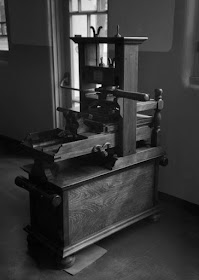I've enjoyed using the Leica and the Summitar in part because it has encouraged me to look more closely at the era in which the camera and lens were produced in response to the challenges met by the camera and lens designers in those days. The issue which came to the fore in the late 1930s was lens speed. The good quality lenses up to then such as the Tessar with its four elements in three groups were typically capable of being stopped down to f3.5. In the post-war years Tessar designs became available which enabled an aperture of f2.8, but that was the ultimate limit permitted with just four elements.
The solution devised by Leitz and the other major lens designers in the 1930s was to add more glass lens elements. The Summitar has seven elements in four groups, allowing a maximum aperture of f2. The Zeiss Sonnar used six elements in four groups to produce f1.5. In the post-war years those designs were enhanced with anti-reflective coatings which helped overcome the contrast problems which came along with more glass surfaces and air spaces between lens elements.
The Jupiter 8 lens on my Kiev IIa is a copy of the Zeiss Sonnar design; it is coated and has a maximum aperture of f2. I have not made a lot of pictures to date with this Soviet camera and lens combination, but I hope to make better use of this resource as it can produce really excellent results. The Jupiter 8 was also made with an M39 screw mount, so I may have to find one of those to use with my Zorkis and the Leica as well.
One reason I have not made more use of the Jupiter 8 is that I also have an excellent Jupiter 12 for the Kiev IIa; it is a copy of the Zeiss Biogon 35/2.8 which often seems a better fit with my way of seeing the world.
I recognize that my frequent preference for the wide-angle 35mm lenses is likely due in part to habit rather than any innate superiority, so I am going to make a determined effort to give the 50mm normal lenses a better chance to show their capabilities. That goes not only for the Jupiter 8, but also for the extraordinary six-element Schneider-Kreuznach Xenons on my Kodak Retinas.









It's funny. When I am shooting my Leica M rangefinder, I truly prefer the 35mm focal length. However, when shooting any of my vintage 35mm film SLRs, I'm totally in the 50mm camp.
ReplyDeleteThat's a good point. I have something of the same reaction. Perhaps it has to do with the superior view one gets with an slr, particularly when you can see the actual dof. One of the reasons I like the wide-angle on the Kiev is the nice accessory viewfinder which provides a much bigger and brighter view of what I am shooting than the camera's viewfinder.
ReplyDeleteVery interesting reading as always Mike. I know other lenses are technically better, but some of my favorite pictures from my Pentax were taken with the 40mm pancake, which I believe is a
ReplyDeleteTessar formula, and generally gets lousy reviews on the web.
I'm pretty sure I never came across a Tessar that I didn't like. I have quite a few on 35mm and mf cameras which have always performed well for me. I think the best of mine may be the Color Skopar on the Vito II; that's another one I need to get back to.
ReplyDelete